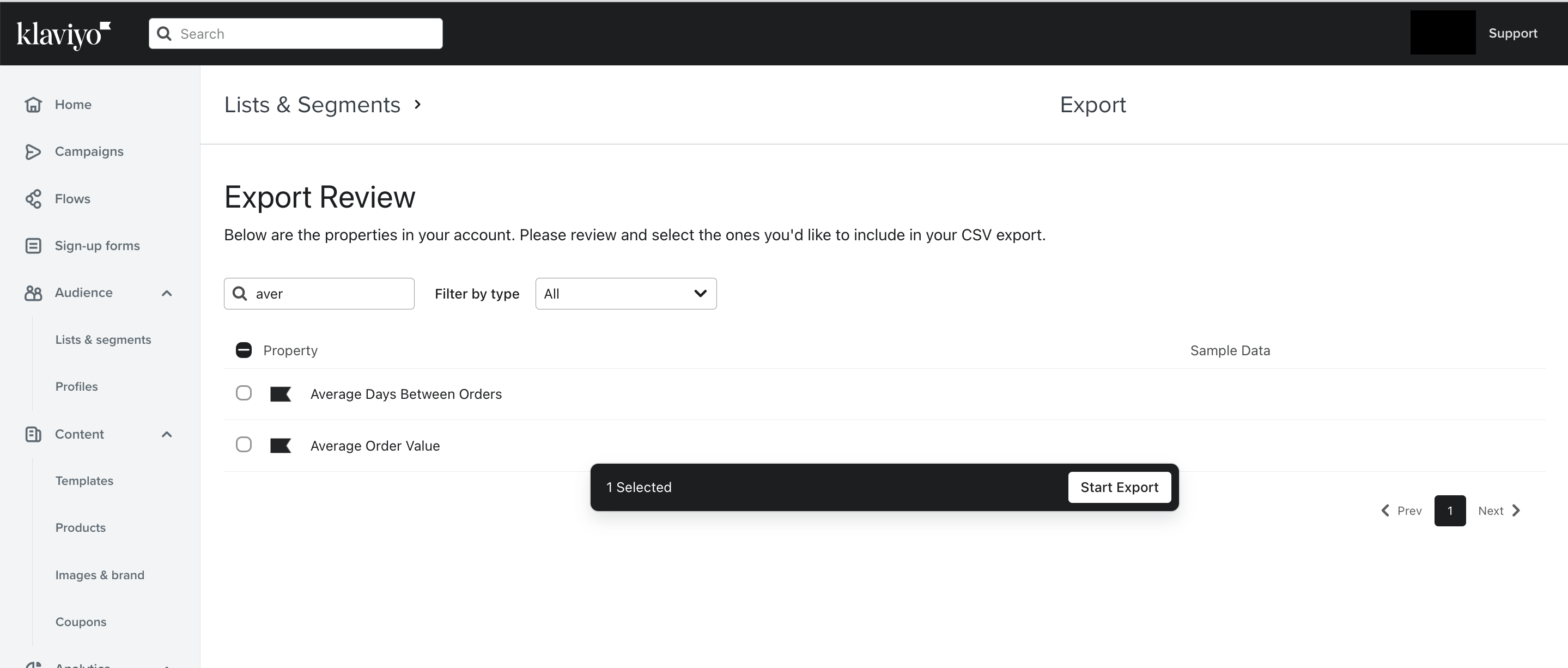Hi there!
I’m wondering if I can get in Klavyio data on the average time the customer is coming back for a second or a next purchase?
Best answer by Dov
View original +2
+2
Hi there!
I’m wondering if I can get in Klavyio data on the average time the customer is coming back for a second or a next purchase?
Best answer by Dov
View originalHi there. What do you mean by “get in the data?” Do you mean access it through dynamic code to use in a flow or email, or simply to check and see what it is for an individual contact?
Here is the Klaviyo guide to their predictive analytics.
If that’s not what you mean, could you explain a little bit more?
 +2
+2
Hi David,
Thank you for your message!
Actually, the idea is that we want to build flows for incentivising second or next purchase.
And firstly, we want to understand what is the average time between two purchases on average for all of our audience. Is it 60, 90 days on average for all of our customers.
And then, depending on this date, we will create the timeframe for the repeat purchase flow.
Of course, a good idea would be to build flows that have different time frame for each customers, because on average it can be 60 days for example, but we have customers that already have 2 and more purchases with individual time frames, and they would receive the flow depending on their individual behaviour (how often they use to buy).
I hope I made it more or less clear. :)
Thank you!
Yes, that makes perfect sense, but unfortunately, I don’t think you can pull that average information for your entire audience. That would certainly be helpful though. (Or maybe I’m wrong and someone from the Klaviyo team will step in and gives the correct answer.)
The beauty of predictive analytics is that if you set up a flow with that as a trigger, it will trigger for each individual contact based on their individual behavior. So if you have one contact that makes repeat purchases every month, it will trigger the next time they approach a 30 day span without a purchase. Meanwhile, you might have another contact that only purchases once every 6 months, and it will go accordingly.
But, I totally see your point in wanting to have an overall average. Let’s hope Klaviyo has some better insight.
 +2
+2
Thank you David!
I agree with you.
Hi
Thank your for sharing your question with the Klaviyo Community. And thank you
You were certainly on the right track by bringing this up. If you create a segment using the following definition: “properties about someone > email contains @ AND is not suppressed”, that will create a segment of all active profiles in your account.
From there, you can export the segment and check the box for average time between orders for export (you can type it in to easily search it up, instead of scrolling through pages of properties).
Then, in the .csv file, you can aggregate the data manually to determine the average and build a flow accordingly.
Thanks and have a great weekend.

 +2
+2
Thank you
Great feedback!
 +1
+1
Hello,
I am currently trying to pull this same data. However, I have noticed in Klaviyo 2.0 there is no longer an “Average Days Between Orders” box for exports. Any reason why they got rid of this?
Thanks!
Hey
Including the “Average Days Between Orders” profile property as part of your export is still available:

If you aren’t seeing that option when exporting, chances are this means you don’t have enough data for predictive analytics to be enabled.
To qualify for predictive analytics you’ll need to meet the following conditions:
David
Enter your username or e-mail address. We'll send you an e-mail with instructions to reset your password.